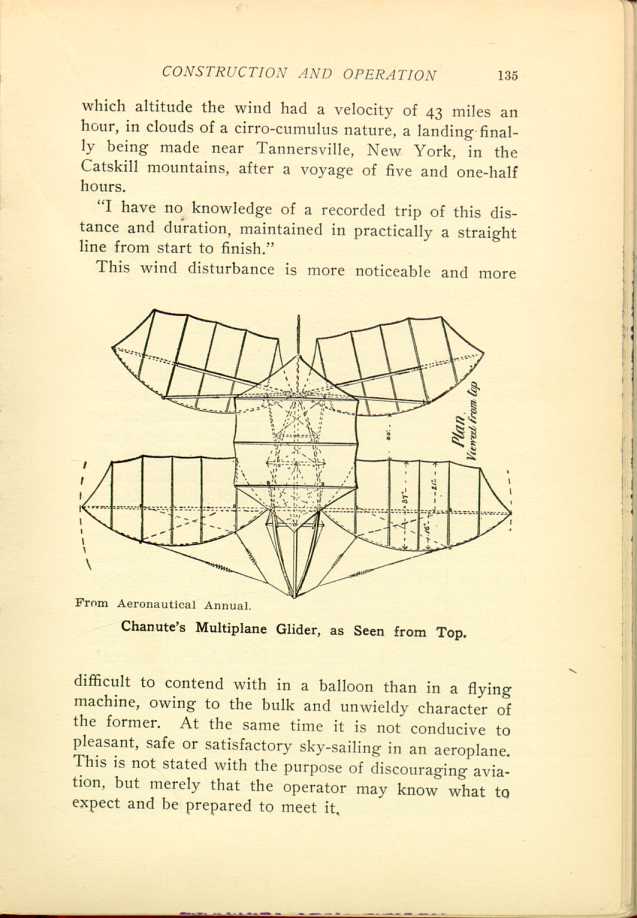Changes In Wind Currents.
While Mr. Atherholt's experience has been mainly with balloons it is all the more valuable on this account, as the balloons were at the mercy of the wind and their varying directions afforded an indisputable guide as to the changing course of the air currents. In speaking of this he said:
"In the many trips taken, varying in distance traversed from twenty-five to 900 miles, it was never possible except in one instance to maintain a straight course. These uncertain currents were most noticeable in the Gordon-Bennett race from St. Louis in 1907. Of the nine aerostats competing in that event, eight covered a more or less direct course due east and southeast, whereas the writer, with Major Henry B. Hersey, first started northwest, then north, northeast, east, east by south, and when over the center of Lake Erie were again blown northwest notwithstanding that more favorable winds were sought for at altitudes varying from 100 to 3,000 meters, necessitating a finish in Canada nearly northeast of the starting point.
"These nine balloons, making landings extending from Lake Ontario, Canada, to Virginia, all started from one point within the same hour.
"The single exception to these roving currents occurred on October 21st, of last year (1909) when, starting from Philadelphia, the wind shifted more than eight degrees, the greatest variation being at the lowest altitudes, yet at no time was a height of over a mile reached.
"Throughout the entire day the sky was overcast, with a thermometer varying from fifty-seven degrees at 300 feet to forty-four degrees, Fahrenheit at 5,000 feet, at
"I have no knowledge of a recorded trip of this distance and duration, maintained in practically a straight line from start to finish."
This wind disturbance is more noticeable and more

From Aeronautical Annual.
[Description: Black and white illustration: Glider, from above.]
Chanute's Multiplane Glider, as Seen from Top.
Not only does the wind change its horizontal course abruptly and without notice, but it also shifts in a vertical direction, one second blowing up, and another down. No man has as yet fathomed the why and wherefore of this erratic action; it is only known that it exists.
The most stable currents will be found from 50 to 100 feet from the earth, provided the wind is not diverted by such objects as trees, rocks, etc. That there are equally stable currents higher up is true, but they are generally to be found at excessive altitudes.